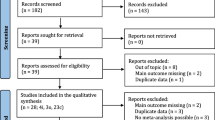Abstract
Purpose: To determine whether the blastocyst zona shedding process within the murine uterine cornus in vivo is due to a global lytic process caused by uterine proteolytic enzyme, or is triggered by the blastocyst hatching process as observed in vitro.
Methods: Fifty-one female ICR mice aged 5–8 weeks were used for this study. From 8:00 p.m. of the 4th day postcoitus to 7:00 p.m. of the 5th day postcoitus, the uterine cornua of 51 mice were isolated at 30-min intervals. Blastocysts within the uterine cornua were flushed out with a balanced solution under the dissecting microscope. The stages of blastocyst development and the proportion of hatching or hatched blastocysts and the discarded zona pellucida (ZP) were inspected and counted.
Results: A total of 672 blastocysts were recovered from the uterine horns of the 51 mice. They were divided into six groups according to the blastocyst developmental stages (before or after ZP escape; before or after the initiation of implantation). Group I represents the earliest embryonic stage and Group VI represents the most advanced blastocyst developmental stage during the peri-implantation period. The empty ZP recovery rates (number of discarded ZP/all hatched blastocysts) were 52.3%, 21.5%, 17.2%, 6.6%, 1.6%, and 0% in Groups I–VI, respectively. Five hatching blastocysts out of 199 embryos in Group I were found and a 100% of ZP recovery rate was obtained from 6 of 19 mice in Groups I and II.
Conclusions: The present study shows that active blastocyst hatching occurs in vivo because both hatching blastocysts and empty ZP can be found within the uterine cornua of ICR mice before implantation. The empty ZP recovery rate declined significantly, along with a progression of embryo development and implantation, implying that intrauterine zona lytic activity occurs during the peri-implantation stage.
Similar content being viewed by others

REFERENCES
Wassarman P, Chen J, Cohen N, Litscher E, Liu C, Qi H, Williams Z: Structure and function of the mammalian egg zona. J Exp Zoology 1999;285:251-258
Gonzales DS, Bavister BD: Zona pellucida escape by hamster blastocysts in vitro is delayed and morphologically different compared with zona escape in vivo. Biol Reprod 1995;52:470-480
Enders AC, Schlafke S: Cytological aspects of trophoblastuterine interaction in early implantation. Am J Anat 1968;125: 1-30
Cole RJ: Cinemicrographic observations on the trophoblasts and zona pellucida of the mouse blastocyst. J Embryo Exp Morphol 1967;17:481-490
Niemann H, Elsaesser F: Steroid hormones in early pig embryo development. In The Mammalian Preimplantation Embryo. Regulation of Growth and Differentiation In Vitro, BD Bavister (ed), New York, Plenum Press, 1987
Massip A, Mulnard J: Time-lapse cinematographic analysis of hatching of normal and frozen-thawed cow blastocysts. J Reprod Fert 1980;58:475-478
Boatman DE: In vitro growth of non-human primate pre and peri-implantation embryos. In The Mammalian Preimplantation Embryo. Regulation of Growth and Differentiation In Vitro, BD Bavister (ed), New York, Plenum Press, 1987
Lopata A, Hay DL: The potential of early human embryos to from blastocysts, hatch from their zona and secret HCG in culture. Hum Reprod 1989;4:87-94
Perona RM, Wassarman PM: Mouse blastocyst hatch in vitro by using a trypsin-like proteinase associated with cells of mural trophectoderm. Dev Biol 1986;114:42-52
Parkening TA: An ultrastructural study of implantation in the golden hamster. I. Loss of the zona pellucida and initial attachment to the uterine epithelium. J Anat 1976;121:161-184
Schmoll F, Schneider H, Wimmers K, Ponsukili S, Schellander K: Zona pellucida thinning during expansion of in vitro produced cattle blastocysts. Reprod Dom Anim 1999;34:11
Berstrom S: Shedding of the zona pellucida of the mouse blastocyst in normal pregnancy. J Reprod Fert 1972;31:275-277
McRae AC, Church RB: Cytoplasmic projections of trophectoderm distinguish implanting from preimplanting and implantation-delayed mouse blastocysts. J Reprod Fert 1990;88:31-40
Orsini MW, McLaren A: Loss of the zona pellucida in mice, and the effect of tubal ligation and ovariectomy. J Reprod Fert 1967;13:485-499
Author information
Authors and Affiliations
Rights and permissions
About this article
Cite this article
Lin, SP., Lee, R.KK. & Tsai, YJ. Animal Experimentation: In Vivo Hatching Phenomenon of Mouse Blastocysts During Implantation. J Assist Reprod Genet 18, 341–345 (2001). https://doi.org/10.1023/A:1016640923269
Issue Date:
DOI: https://doi.org/10.1023/A:1016640923269



